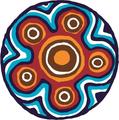YEAR 1 Term Overview

Dear Year 1 Families,
Welcome back to school for Term 2! We have been very proud of the Year 1 student’s transition back into the routines and they have already demonstrated their growth since Prep!
Curriculum:
Literacy
Throughout reading in Term 2, Year 1 students will be exploring the features and differences of realistic and fantasy fiction texts. Students will continue to develop their ability to decode while reading, focusing on strategies such as: looking for chunks within words, stretching the sounds, and blending sounds together to solve unknown words. Students will develop their fluency by reading smoothly and using expression
for example when a character is speaking, when words are bolded or when different punctuation is used. Students read books several times to support fluency and comprehension. Students will practise how to summarise a text by talking about important information in an organised way. Students will share their knowledge about a topic before reading and discuss what they have learnt from reading a text.
Through small group guided reading, students will continue to explore other comprehension strategies such as inferring and predicting with a variety of fiction and non-fiction texts.
In writing, students will be using mentor texts to support their development of ideas, word choice, sentence fluency and organisation. Throughout the term students will investigate how an author starts sentences in different ways and uses punctuation to create flow in their writing. Students will focus on real life experience to assist them with narratives and information reports. Students will continue to build on their ability to use punctuation such as full stops and capital letters correctly. Each week, students will engage in SMART spelling, phonics as well as handwriting practice to help improve their understanding of spelling patterns and letter formation.
Numeracy
This term, Year 1 students will learn how to tell time to the hour and half-hour using analogue and digital clocks and describe the duration of familiar events. Students will then explore chance through looking at everyday events and describing them using everyday language such as ‘will happen’, ‘won't happen’ and ‘might happen’. Later in the term students will be learning how to order Australian coins according to their value and describing the coins’ appearance (shape, size, colour). Year 1 students will also have an integrated focus on place value throughout the term to expose them to multiple strategies of counting efficiently and additive strategies.
Inquiry
Throughout this inquiry unit, Year 1 students will lead the direction of the inquiry based on their wonderings, creativity and critical thinking to investigate the driving question: How do changes to resources impact our local environment? Students will identify the difference between living and non-living things, and understand how resources are made and used in our everyday lives, through the exploration of different types of resources and identify the effects, changes and different uses. At the conclusion of the unit, students will take action with their learning, and plan how they will look after the environment.
Ways to Help Your Child At Home:
Home Reading -
Please ensure that your child is reading every night at home for at least 20 minutes, following up with a conversation about the book (this is very important to help them verbalise their understanding). Please see your child’s homegroup teacher if you are having trouble accessing Reading Eggs or Wushka.
Learning Goals - Your child’s individualised learning goals are listed on Compass. There is a reading goal, a maths goal, a writing goal and an Inquiry or SEL (social and emotional learning) goal for your child. Please read these and support your child by going through the suggested strategies to help at home. These goals are changed every three weeks, and you will also be informed of your child’s achievement of these goals. If you have any questions regarding your child’s goals, please see your child’s teacher.
We look forward to working with you and your child this year. Please come and see your child’s teacher if you have any questions or concerns. After school is best for a quick chat, otherwise send your child’s teacher an email to set up an appointment time for a longer chat.
Year 1 Team
